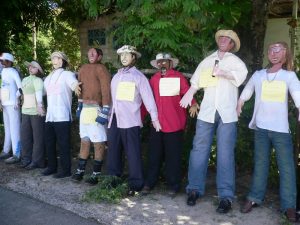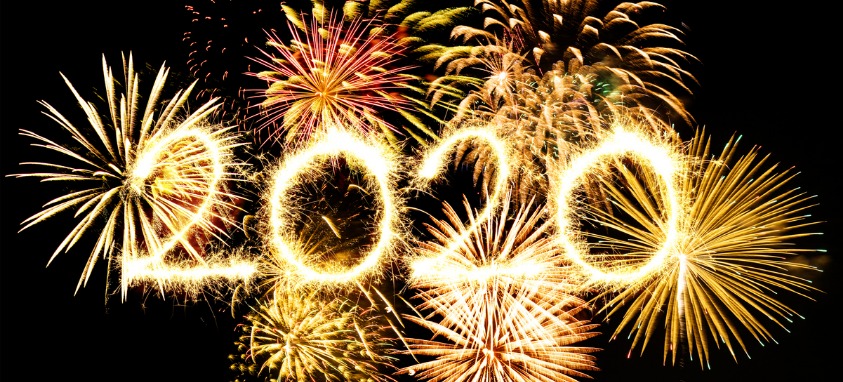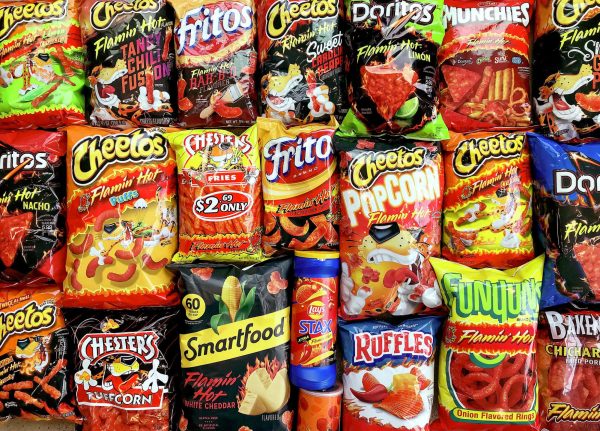How people around the world celebrate the New Year
People all around the world with different cultures celebrate a new year in many different ways; they each have unique traditions.
December 31, 2019
In the United States, New Year’s Day is a national holiday with businesses and offices closed. Americans may celebrate on New Year’s Eve with champagne, confetti, noisemakers, or fireworks. People traditionally kiss someone they love at midnight and sing the Scottish ballad “Auld Lang Syne.”
 For more than one hundred years, watching the ball drop at Times Square in New York City has been a tradition as well. Every year, about two million people gather in New York City’s Times Square to watch the famous “ball drop,” and it is televised as well. According to Anna Deen, “This tradition began in 1907 with a 700-pound ball that was slowly lowered down a pole until it reached the ground at midnight. Today, ball is 11,875 pounds and covered in sparkling Waterford crystals.”
For more than one hundred years, watching the ball drop at Times Square in New York City has been a tradition as well. Every year, about two million people gather in New York City’s Times Square to watch the famous “ball drop,” and it is televised as well. According to Anna Deen, “This tradition began in 1907 with a 700-pound ball that was slowly lowered down a pole until it reached the ground at midnight. Today, ball is 11,875 pounds and covered in sparkling Waterford crystals.”
For many families, the holiday is marked by eating traditional foods such as sauerkraut and pork or black-eyed peas. These foods allegedly bring good luck in the year ahead.
And for Americans, the New Year often brings resolutions as well. The day symbolizes starting over fresh for many people, so it is the most popular day to start a diet, join a gym, or make small life changes toward self-improvement.
How do people in other countries celebrate? According to an article called 9 New Year’s Traditions From Cultures Around The World, these are some of the traditions celebrated across the globe.
 Spain
Spain
A tradition for people who live in Spain is to eat 12 grapes at each stroke of the clock until midnight. The grapes represent good luck for each month of next year. In greater cities like Madrid and Barcelona, people gather in main squares to consume their grapes together and pass around bottles of cava, which according to Google, is a Spanish sparkling wine produced in the same way as champagne.
 Philippines
Philippines
You’ll find round shapes all over the Philippines on New Year’s Eve. They represent coins to symbolize prosperity in the coming year. A tradition that many families also do is that they display an array of round fruits, and some people eat exactly 12 fruits to bring good luck in each upcoming month. Many also wear Polka dots for good luck.
Brazil
Brazilians believe that to be lucky in the new year, you should wear special underwear on New Year’s Eve. In Brazil, as well as other Central and South American countries like Ecuador, Bolivia, and Venezuela, “The most popular colors are red, thought to bring love in the New Year, and yellow thought to bring money.”
 Panama
Panama
It is a tradition to burn effigies (dolls that look like real people) of well-known people such as famous actors or political figures to frighten off evil spirits. The effigies are intended to portray the old year.
Scotland
Across the country, people practice a tradition called “first-footing,” which is to be the first person to step into a house. Usually they are to carry some sort of gift for luck in the upcoming year. They also hold Bonfire customs, where they place giant fireballs on poles, supposedly symbols of the sun, to purify the coming year.
 Vietnam
Vietnam
People celebrate Tet, the Lunar New Year, which falls in February on a solar calendar. There, they have a tradition similar to “first-footing” because in the morning, the oldest man of the family has to be the touch to touch his feet to the floor to bring their family good luck. The first day of Tet is usually spent with immediate family, the second day is for visiting friends, and the third day is dedicated to teachers and visiting temples. The Vietnamese believe that doing chores, laundry, or housework on this day brings bad luck in the new year.
In conclusion, countries around the world celebrate New Year with many unique traditions but all of them focus on the notion of hopefulness–that a new start can bring happiness or prosperity in the year ahead. Happy New Year, however you may celebrate!












